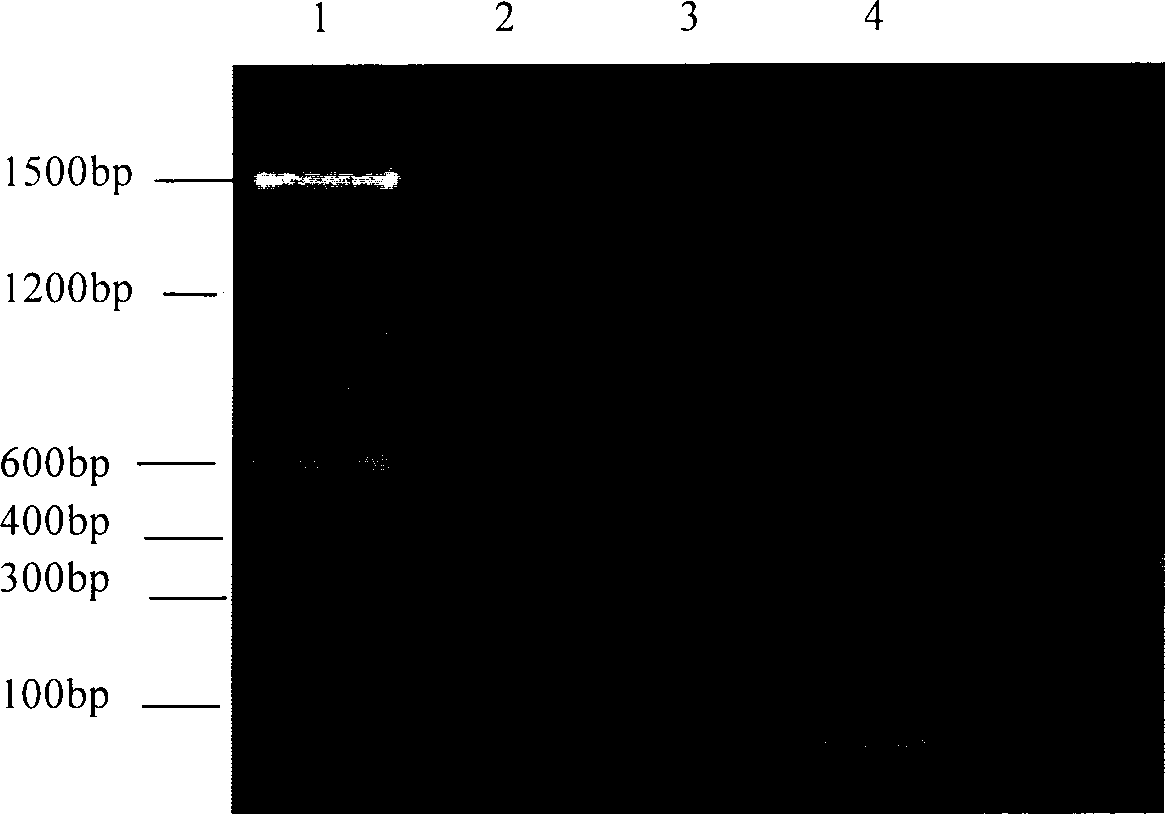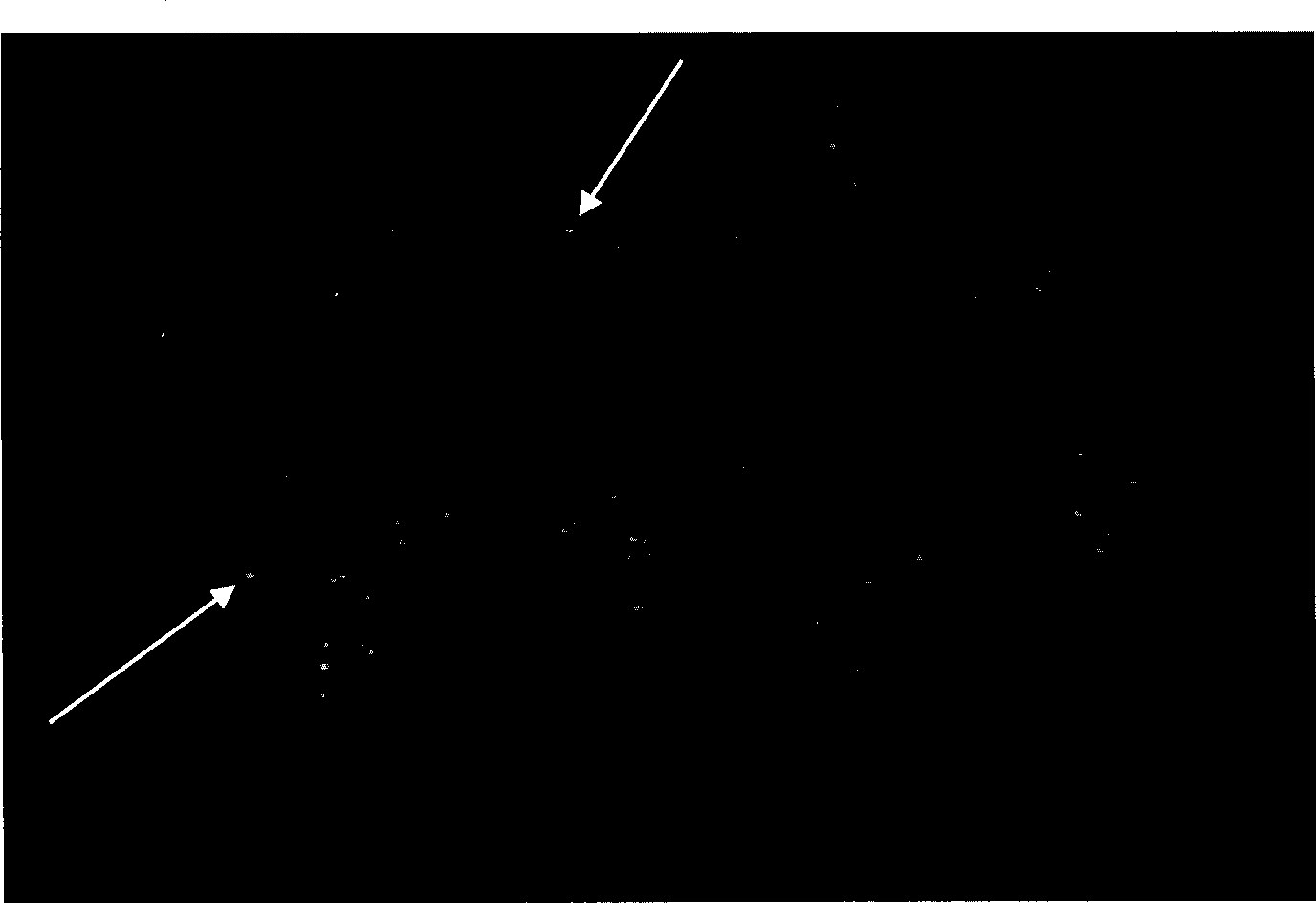Perultimate chromomere marker of cotton chromosome fluorescent in situ hybridization and use thereof
A fluorescence in situ hybridization and chromosome technology, applied in the field of molecular cytogenetics, can solve the problems of inability to separate and obtain telomere sequences, difficulties in cloning telomere sequences, and difficulty in inserting telomere sequences
- Summary
- Abstract
- Description
- Claims
- Application Information
AI Technical Summary
Problems solved by technology
Method used
Image
Examples
Embodiment 1
[0022] Example 1 Cloning of Telomere Sequence
[0023] By searching the nucleic acid sequences published on NCBI, it was found that a BAC clone (F23H6) located on chromosome 3 of Arabidopsis thaliana contained a segment of Arabidopsis thaliana telomere sequence. A pair of primers were designed according to the non-tandem repeat sequence at both ends of the telomeric sequence: TS1 (5'-TGAGGGACTCACATACATTG-3'); TS2 (5'-ACCACTGAACATCCATTGAG-3'). The Arabidopsis genome was used as a template for PCR amplification. The conditions of the PCR reaction are: the reaction system is first denatured at 94°C for 5 minutes, followed by 30 cycles, each cycle consists of the following reaction conditions: denaturation at 94°C for 45s, annealing at 55°C for 30s, extension at 72°C for 45s, The final step was an extension at 72°C for 5 min. The product of the PCR reaction was purified by gel recovery and ligated with T-easy carrier. The obtained clone containing the target fragment was named ...
Embodiment 2
[0024] Example 2 Telomere markers of diploid (2n=2x=26) cotton chromosome fluorescence in situ hybridization:
[0025] Material: African cotton (Cotton Research Technology and Trade Company, Chinese Academy of Agricultural Sciences)
[0026] 1. Preparation of root tip metaphase chromosomes:
[0027]Take dozens of African cotton seeds, use a scalpel to cut the seed shell at the seed growth point, and then sow the seeds in boiled and sterilized moist fine sand, and germinate at 25-30°C. When the root grows to 1-2cm (about 1 and a half days), take the root tip (0.5mm) and pretreat it with cycloheximide (25ppm) at 20°C (to break the spindle silk, so that the prophase chromosomes can be concentrated in advance and form dispersed metaphase chromosome), pretreatment for 2 hours in spring and autumn, 1.5 hours in summer, and 2.5 hours in winter. After pretreatment, wash with distilled water for 10 minutes, and fix with fixative solution (95% ethanol: glacial acetic acid 3:1) for 2-2...
Embodiment 3
[0066] Example 3 Telomere markers of tetraploid (4n=4x=52) cotton chromosome fluorescence in situ hybridization:
[0067] Material: Tetraploid cotton Xinhai 7# (Cotton Research Technology and Trade Company, Chinese Academy of Agricultural Sciences)
[0068] 1. Preparation of root tip metaphase chromosomes
[0069] Soak Xinhai 7# seeds in warm water at about 60°C overnight, sow in boiled and sterilized moist fine sand, and germinate at 25-30°C. When the root grows to 3-5cm (about 2 and a half days), take the root tip (0.5mm), and pretreat it with cycloheximide (25ppm) at 20°C (to break the spindle silk, so that the prophase chromosomes can be concentrated in advance to form dispersed metaphase chromosome), pretreatment for 2 hours in spring and autumn, 1.5 hours in summer, and 2.5 hours in winter. After pretreatment, wash with distilled water for 10 minutes, and fix with fixative solution (95% ethanol: glacial acetic acid 3:1) for 2-24 hours. Then, wash with water for 10min,...
PUM
 Login to View More
Login to View More Abstract
Description
Claims
Application Information
 Login to View More
Login to View More - R&D
- Intellectual Property
- Life Sciences
- Materials
- Tech Scout
- Unparalleled Data Quality
- Higher Quality Content
- 60% Fewer Hallucinations
Browse by: Latest US Patents, China's latest patents, Technical Efficacy Thesaurus, Application Domain, Technology Topic, Popular Technical Reports.
© 2025 PatSnap. All rights reserved.Legal|Privacy policy|Modern Slavery Act Transparency Statement|Sitemap|About US| Contact US: help@patsnap.com



